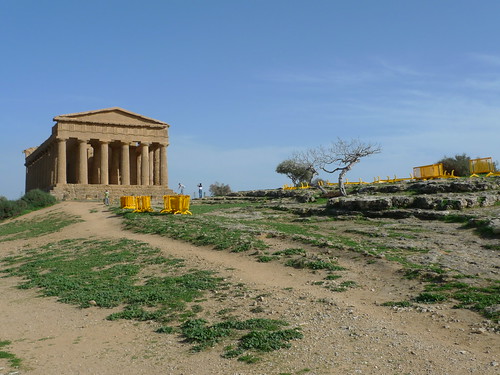
The legend tells that Rome was founded on April 21, 753 BC, by the twin sons of Mars, Romulus and Remus. Romulus killed his brother over the throne and became the sole ruler of Rome. He reigned until 715 BC, when he was succeeded by Numa Pompilius, the founder of Roman law and its religious practices.
With time, Roman power, influence and territory grew to unprecedented proportions in the ancient world. By the end of the Republic (31 BC), Rome controlled the entire Mediterranean. They defeated their most powerful rivals, the Carthaginians, and took over many of the lands ruled by the Greeks, including Egypt. Although, eventually ancient Rome was sacrificed at the altar of its own internal struggles for power, it was not before it had written its name under one of the most important periods in humankind's history. Two thousand years later, ancient Rome remains an endless inspiration of art, culture, architecture, and even fashion.
Costume
Roman costume was influenced by the styles of previous civilizations, such as the Etruscans and the Greeks, and also reflected the dress of conquered peoples, although in a lesser degree. It comprised two main categories: indutus, items that were put on, and amictus, clothing wrapped or draped around the body.
The wide range of climates that existed within the vast Roman Empire led to the creation of the seasonal dressing concept. Dress was adapted to the specific seasons and weather conditions.
Women's clothing
Women's clothes were made of light materials and in a variety of colors, which set them apart from men's clothes. Also, unlike men's dress, women's clothes changed little. The primary garment was the stola, a long tunic with full sleeves. It was made from wool, cotton or linen, with the more expensive designs made from silk. The stola was worn with a girdle known as cingulum and a wide belt, known as a succinda. With the help of these, women achieved to create a double-bloused effect. Under the stola women wore a bust bodice - the strophium, and a sleeveless shift dress - the subucula.
Roman matrons wore wide tunics, pleated into tiny folds, which were held together at the shoulder by a series of buttons along the sleeve.
The palla was a warm piece of cloth with a hood, fastened with a clasp. Another outer garment was the sapparum, worn by women of the upper class, which had short sleeves, and the olicula, which basically was a short cape.
Men's clothing
In the early days of the Republic, Roman men wore a simple linen loincloth known as the subligaculom or licinium. By the time of the empire, only athletes and workmen were permitted to wear loincloths. Romans, unlike the Greeks, were not tolerant of nudity. They did, however, inherit from them their two main garments: the tunic and the cloak. The basic short-sleeved tunic consisted of two pieces of wool cloth joined at the shoulders and down the sides, with slits for the head and arms. It was gathered at the waist with a belt, but could also be worn with a girdle.
There were different tunic styles for different occasions and social ranks. Magistrates wore the Tunica angusti clavi, which had two narrow purple stripes on each shoulder. The Tunica laticlavia, worn by senators, featured wider purple stripes. Made from purple silk and embroidered with gold thread, the Tunica palmata was worn by victorious generals. It consisted of two pieces and was worn together with the Toga picta. There were also other tunics, such as the Tunica recta, the Subucula and Tunica exteriodum, and the Caracaila.
The most important mantle was the toga, which was descended from the Greek himation and the Etruscan tebenna. The draped, elliptically shaped woolen piece of fabric was reserved for Roman citizens; slaves, foreigners, and lower classes were forbidden from wearing it. The toga's decoration, color and shape denoted the wearer's social rank. As did the manner in which the toga was draped.
The different forms of togas included the Toga picta, which signified victory and was worn by Roman generals on specific occasions. This toga was property of the state and only loaned to generals for ceremonial wear. Another toga was the Toga candida, which was worn by candidates for public office. Mourners wore the Toga pulla, which was either black, dark brown or gray, and had a head cover. The solid purple Toga trabea was worn by spiritual men. The same toga with purple and crimson stripes was reserved for the augurs or omens interpreters, while the purple and white one revealed the rulers of the Republic.
With the expansion of the Empire, Rome came to include in its territories much of northern Europe, which translated into harsher climatic conditions. Warm outer garments became a necessity. The Roman wardrobe included the sagum - a blanket-like wrap, taken from the Gauls; the lacerna, a rectangular piece of wool, draped over the shoulders, which had to be fastened with a clasp; the pallum - or women's palla - was a short rectangular cloak, influenced by the Greek himation; the paludanentum, was an enlarged version of the Greek chlamys, worn by Roman generals.
The author is the founder and owner of Adriana Allen LLC - a European fashion brand offering handmade and one-of-a-kind handbags and fashion accessories. You can learn more about world fashion, fashion's history, and how to buy fashion accessories at our official blog